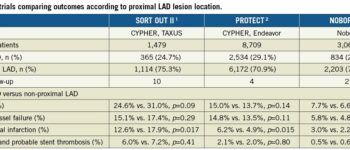
A supplemental loan in multifamily real estate, often associated with Fannie Mae’s lending programs, is an additional financing option for borrowers who already have a primary or first mortgage funded by Fannie Mae. These loans are typically available 12 months after the closing date of the original mortgage and are designed to leverage the increased equity from the property’s appreciated value. They are also known as ‘second mortgages’ and provide a range of benefits for multifamily investors.
Key Features and Requirements of Supplemental Loans:
- Subordination to Senior Debt: Supplemental loans are subordinate to the senior mortgage loan, meaning they are secondary in priority in case of default.
- Eligibility and Timing: The original loan must be in good standing for at least 12 months before a supplemental loan can be secured.
- Loan Terms: These loans offer flexible terms with fixed or variable interest rates and a maximum term of up to 30 years. The terms include the loan size, amortization, Loan-to-Value (LTV) ratio, Debt Service Coverage Ratio (DSCR), and interest rate, which are critical in determining the feasibility of the loan.
- Non-Recourse Loans: These loans protect borrowers from personal liability, except in cases of fraud or other wrongful acts.
- Usage of Funds: Supplemental loans can cover various costs, including property improvements, debt consolidation, and freeing up capital for further investments.
- Loan Assumption: This feature allows the loan to be transferred from the seller to the buyer if the property is sold, which can be beneficial in environments of rising interest rates.
Advantages of Supplemental Loas for Multifamily Investors
- Access to Additional Financing: Investors can secure additional funds based on the increased value of the property without refinancing the original loan.
- Maintaining Original Loan Terms: Investors can tap into equity while retaining the terms and conditions of their first mortgage.
- Flexibility and Security: The loans offer flexible terms and non-recourse protection, making them a secure and adaptable financing option.
Supplemental Loan Application and Underwriting Process
The application process involves describing the property and the proposed use of funds, followed by an underwriting process. This process includes a review of the borrower’s financials, risk assessment, and determining the loan value based on the property’s appraised value. The lender will assess the property’s operating history, future performance projection, and market analysis.
Bạn đang xem: What is a supplemental loan in multifamily?
Considerations for Investors
Investors must weigh the potential costs of obtaining a supplemental loan, including legal fees and appraisal costs. Additionally, the interest rates on these loans may vary and could be higher than the original loan. It’s essential to ensure that the property generates enough income to cover both the original and supplemental loans.
Future Outlook and Market Relevance
Xem thêm : Grilled Chicken Margherita
Supplemental loans are likely to remain in demand due to rising property values and the increasing interest of investors in multifamily properties. They provide a resilient financing tool in uncertain economic times, allowing investors to capitalize on increased property values without disturbing their existing mortgage structures.
In summary, Fannie Mae Supplemental Loans offer a valuable opportunity for multifamily investors to access additional financing while maintaining favorable terms of their existing mortgage. These loans provide flexibility, security, and a range of benefits that make them an attractive option in the multifamily investment landscape.
Nguồn: https://buycookiesonline.eu
Danh mục: Info




